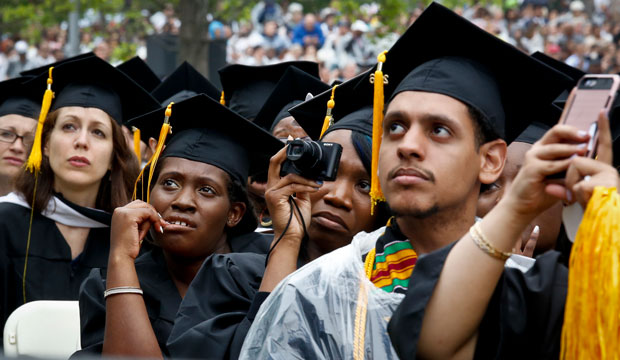Low-income and minority students make up a growing number of the population receiving an undergraduate education, especially at public two-year colleges and less selective four-year colleges, according to a new Pew Research Center Survey.
Out of 20 million students who received an undergraduate education during the 2015-2016 academic year, the survey found that 47 percent of enrolled students were nonwhite, and 31 percent were in poverty. These numbers represent a rise since 1995-96, when out of 16.7 million enrolled students, only 29 percent were non-white and 21 percent were in poverty.
Among the minority groups, Hispanic enrollment in colleges has risen significantly from 6 percent in 1996 to 16 percent in 2016, constituting the largest minority group among students at minimally selective four-year institutions. The share of Hispanic enrollment at two-year colleges has increased from 11 percent in 1996 to 24 percent in 2016 as well.
“The increase in minority enrollees is partly driven by Hispanic enrollment growth,” the report states. “The growth of Hispanic undergraduates reflects both demographic trends and increasing educational attainment.”
Overall, the share of racial and ethnic minorities in undergraduate education has seen an increase over the last two decades, with 43 percent of nonwhites enrolled in public four-year colleges, 37 percent in private nonprofit four-year colleges, and 50 percent in public two-year colleges. Private, for-profit institutions are the only colleges where nonwhites surpass the enrollment of white students, making up 58 percent of these student populations.
The share of independent students living in poverty has continued to rise, constituting 42 percent in 2016 in comparison to 29 percent in 1996.
The survey also found that undergraduate students increasingly are not working while they are enrolled in school. In 2016, 36 percent of undergraduates did not have a job, compared to 20 percent in 2000.
Students Optimistic About Futures Despite High Loan Debts [Survey]



